My 20th crown for August 19th had a sweet scent that was meant for the bees, not me, but I did appreciate the soft, vanilla perfume of the dusty-pink, hollow Joe Pye weed (Eutrochium fistulosum) that grows in the parts of my meadow that retain a little moisture. Along with it are the violet-purple flowers of New York ironweed (Vernonia noveboracensis); the big, yellow daisies of cup plant (Silphium perfoliatum); the small yellow blossoms of grass-leaved goldenrod (Euthamia graminifolia); and a few sprigs of rough goldenrod (Solidago rugosa).
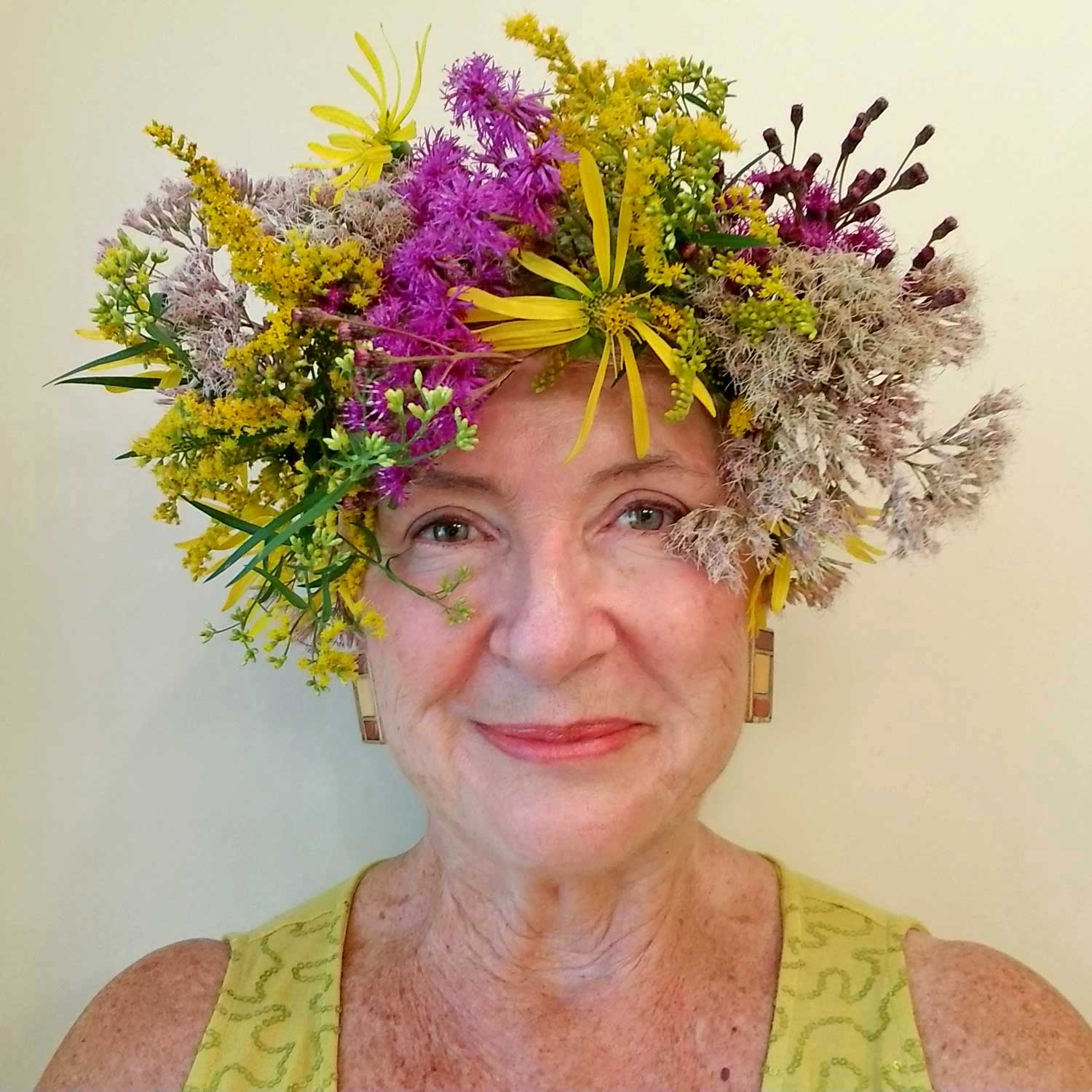
The plants I gathered came mostly from my west meadow…..
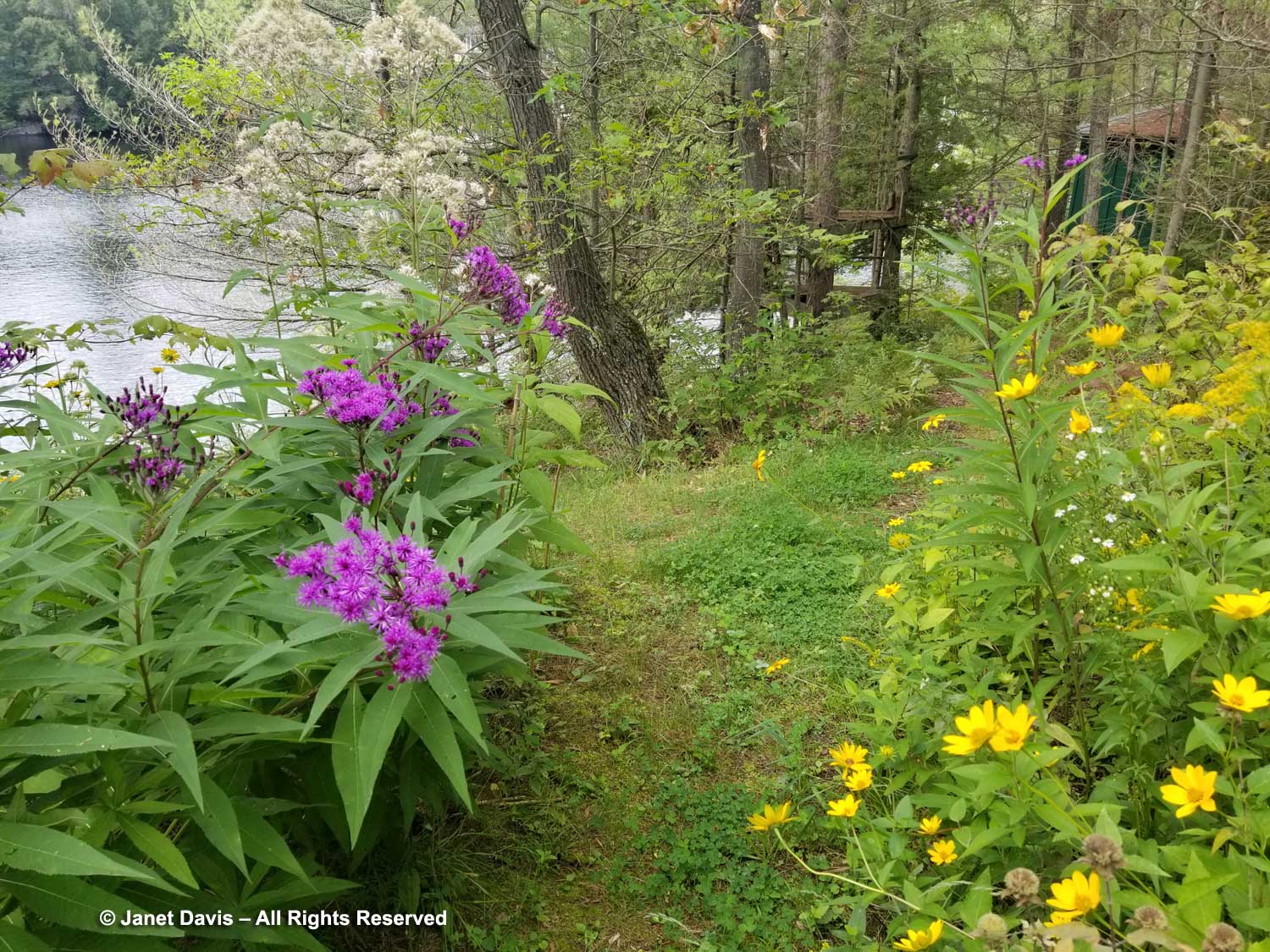
….. where the New York ironweed and Joe Pye weed make excellent companions, appreciating the tiny extra bit of moisture at the midpoint of our sloping property and maturing at about the same height, 2-3 m (6-9 ft), depending on the season.
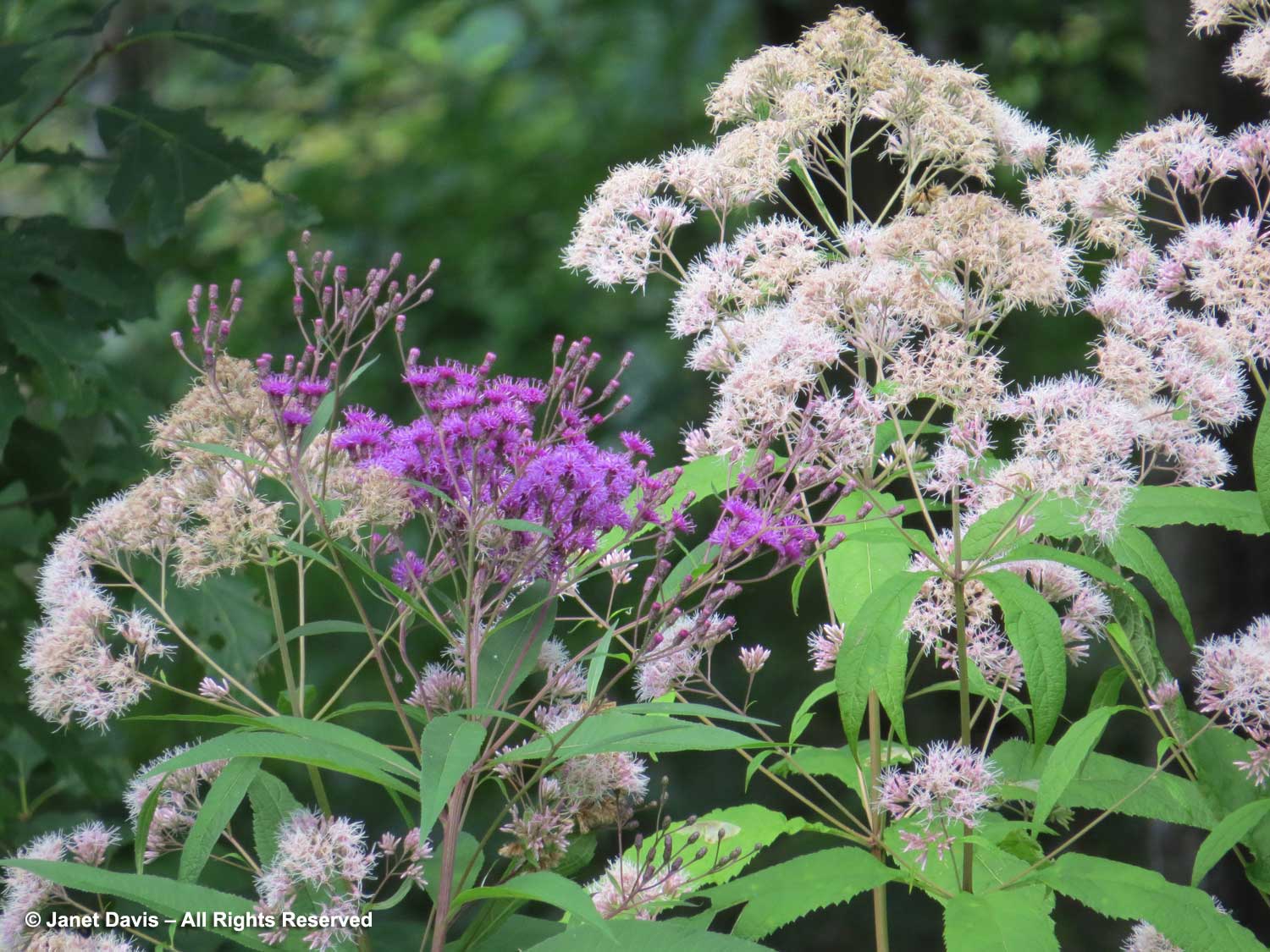
I think I bought my first plant at a nursery, but New York ironweed has popped up on our property in soil that was brought in from neighbouring woodlands. Provided it can maintain fairly damp feet, it is happy in our sandy conditions.
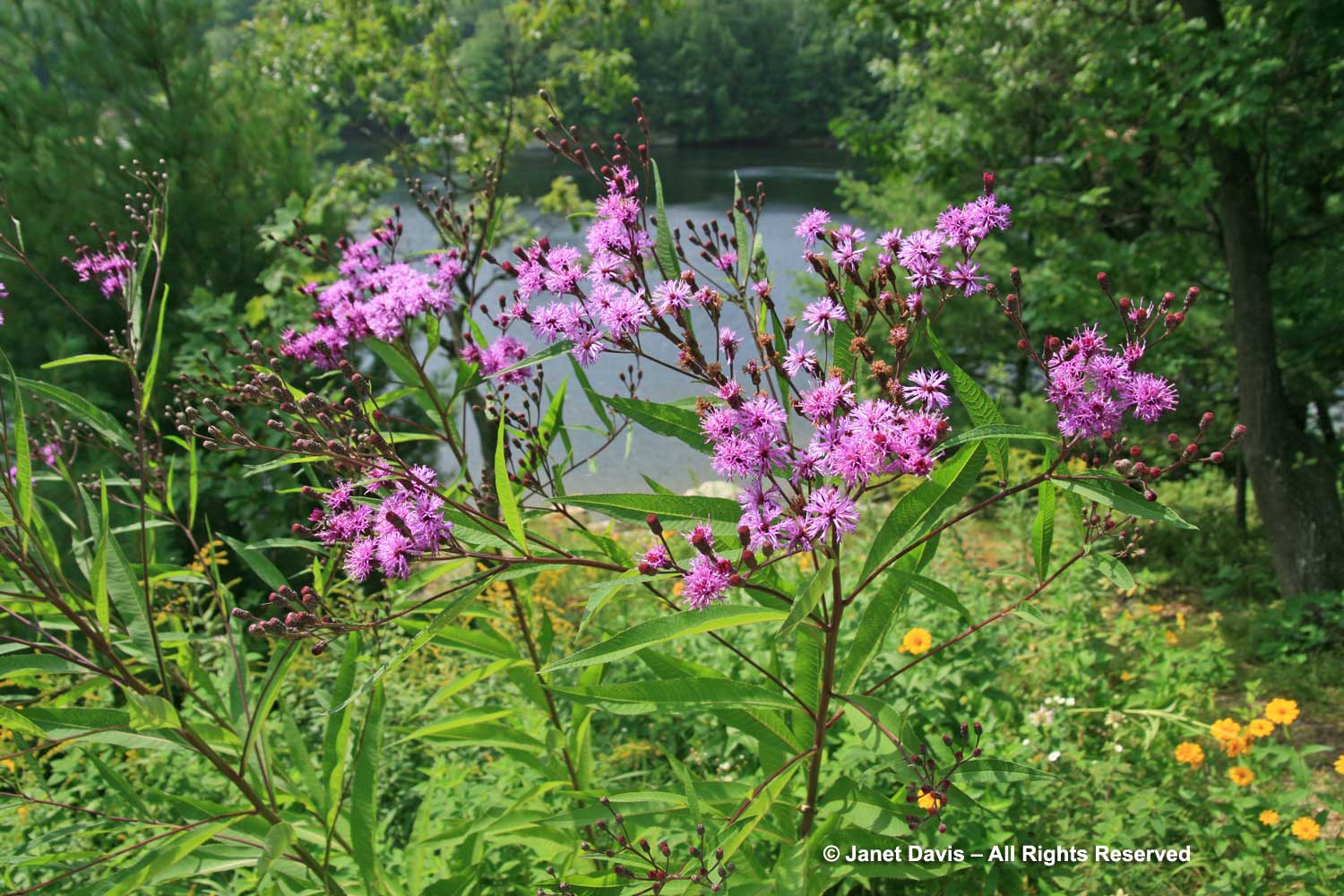
Bees adore it, as do butterflies like the great spangled fritillary, below….
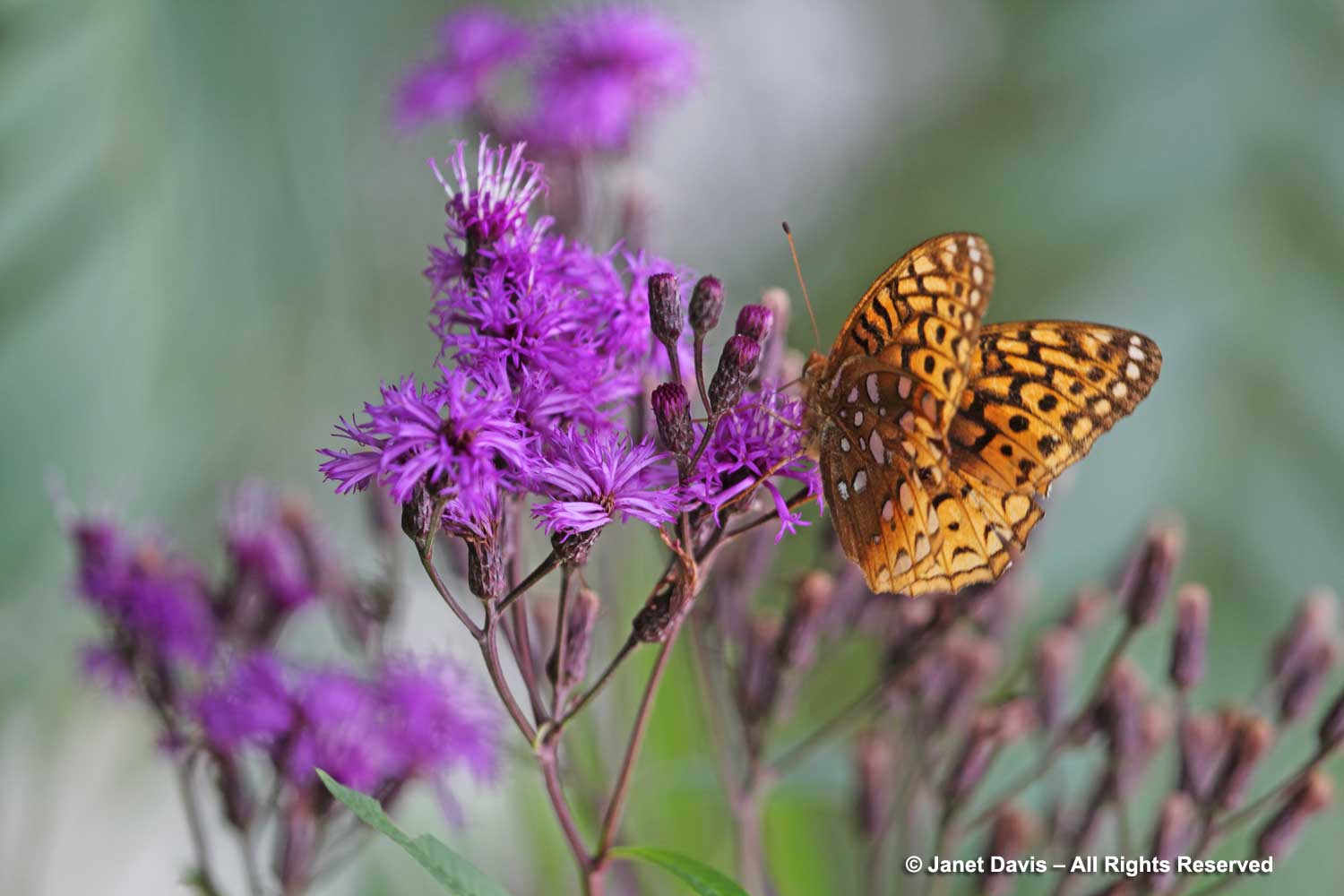
….. and the ruby-throated hummingbird is a fan, too.
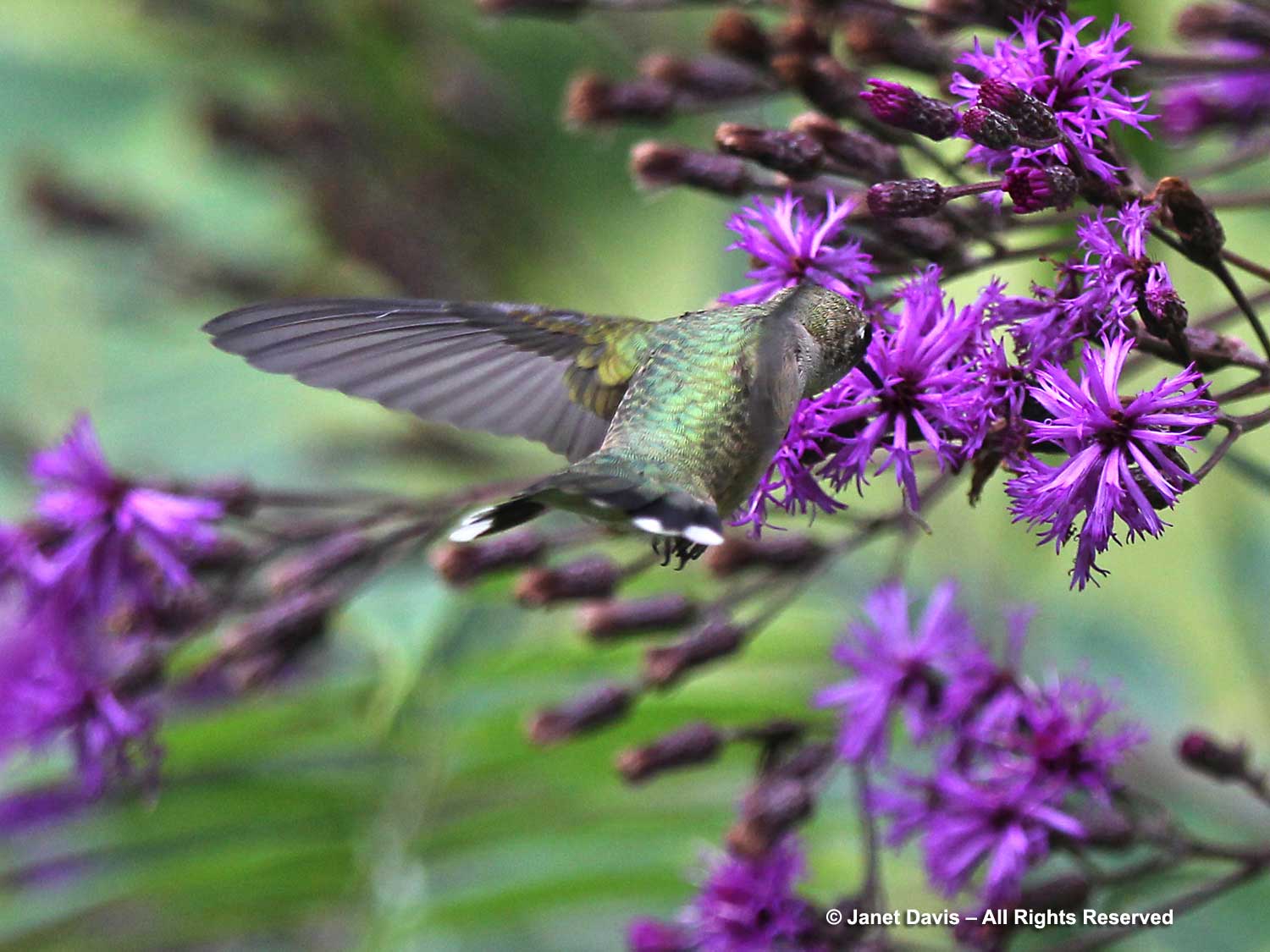
One of my favourite photos was of a female goldenrod crab spider disguised as an ironweed stamen, just awaiting her unwary prey.
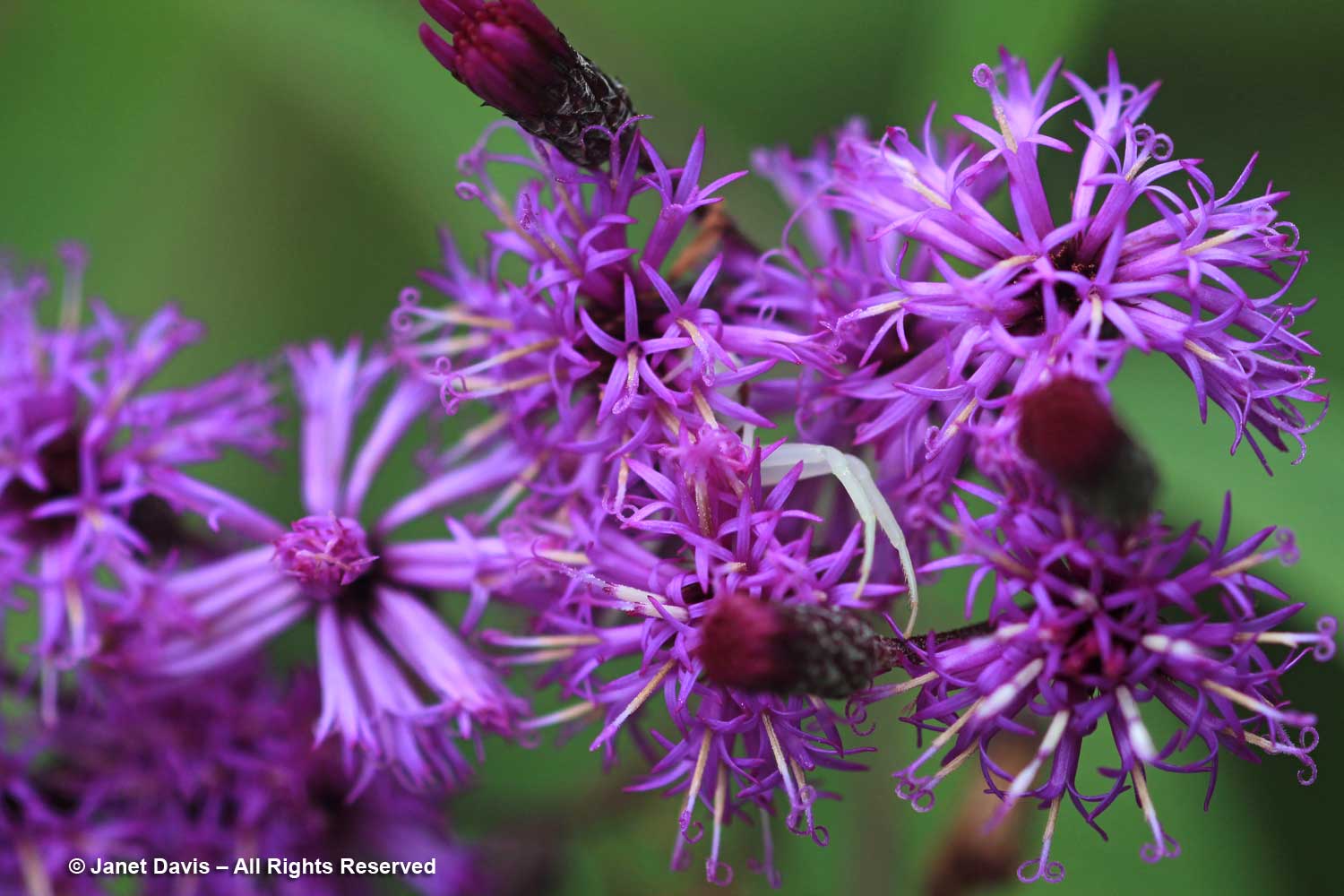
The hollow Joe Pye weed attracts lots of bumble bees. It’s much paler than its spotted (E. maculatum) cousin.
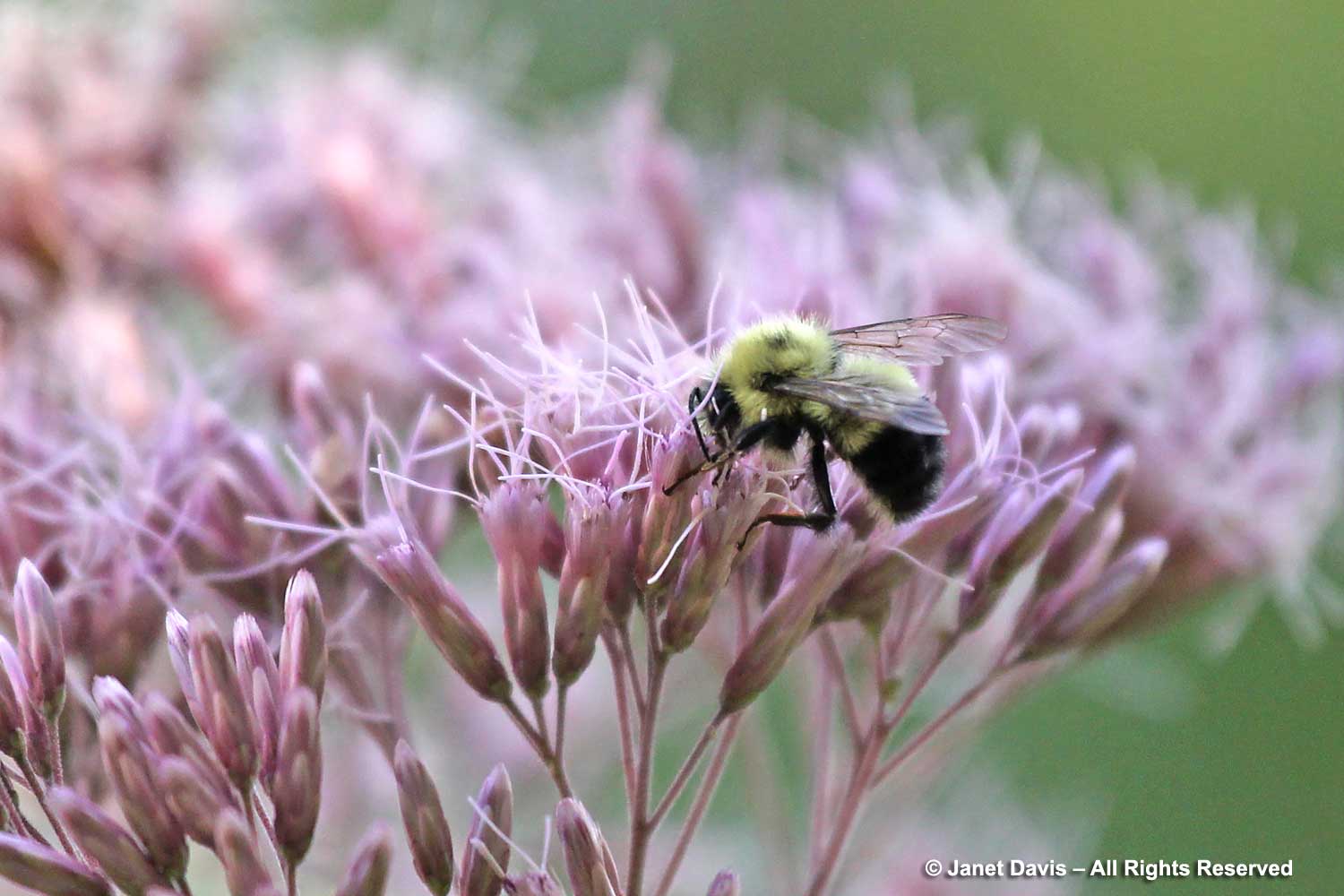
Grass-leaved or flat-topped goldenrod is not a true goldenrod in the Solidago genus, though it was considered part of the gang until recently. It is one of the late summer “weeds” on our property, including near our Waterloo Biofilter septic structure, below, where it definitely emitted a light floral perfume (that was not that of the septic system).
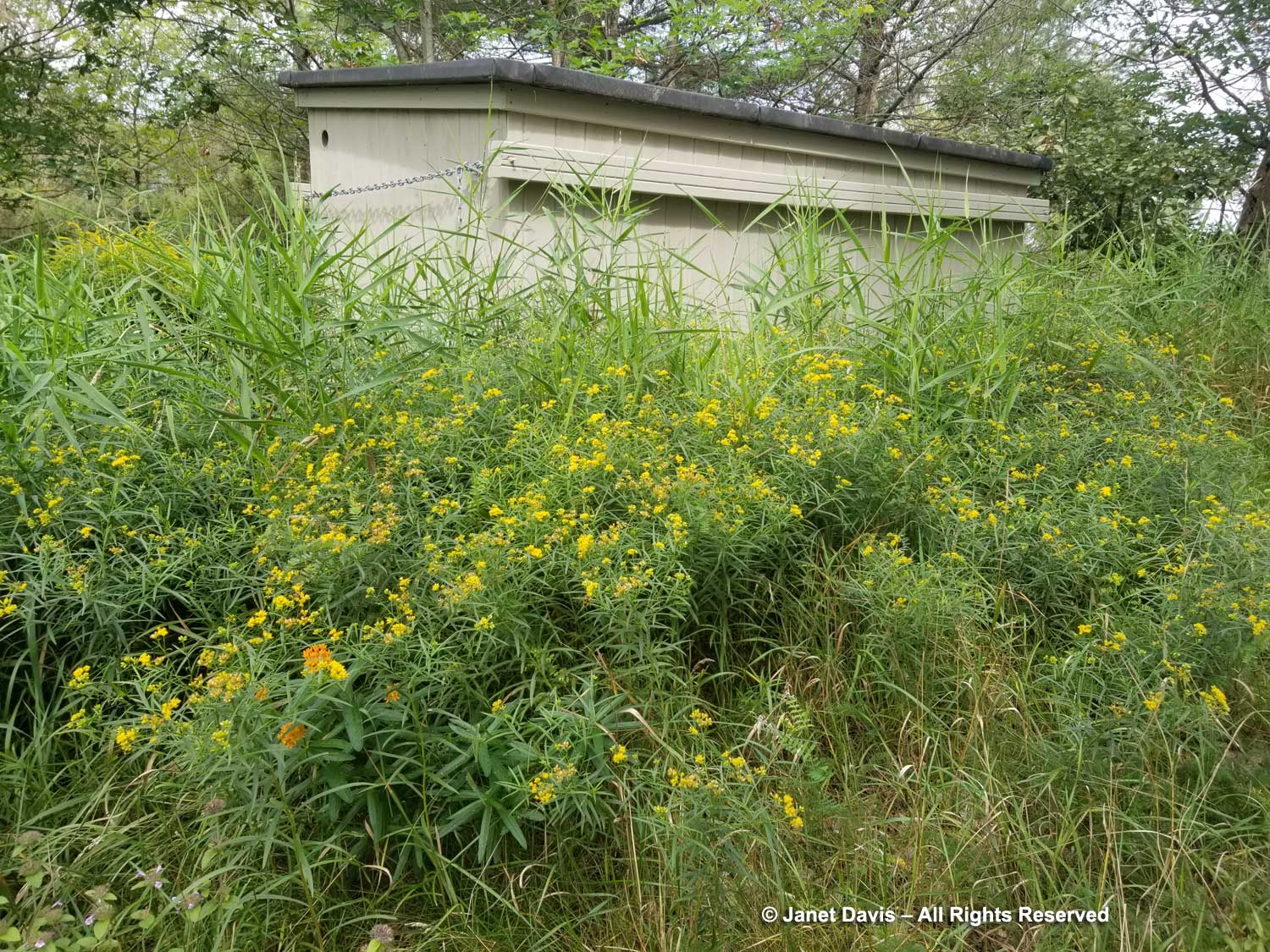
Bumble bees, such as the red-belted bumble bee (Bombus ternarius) below, and other bees seem to love it during its rather short blooming period.
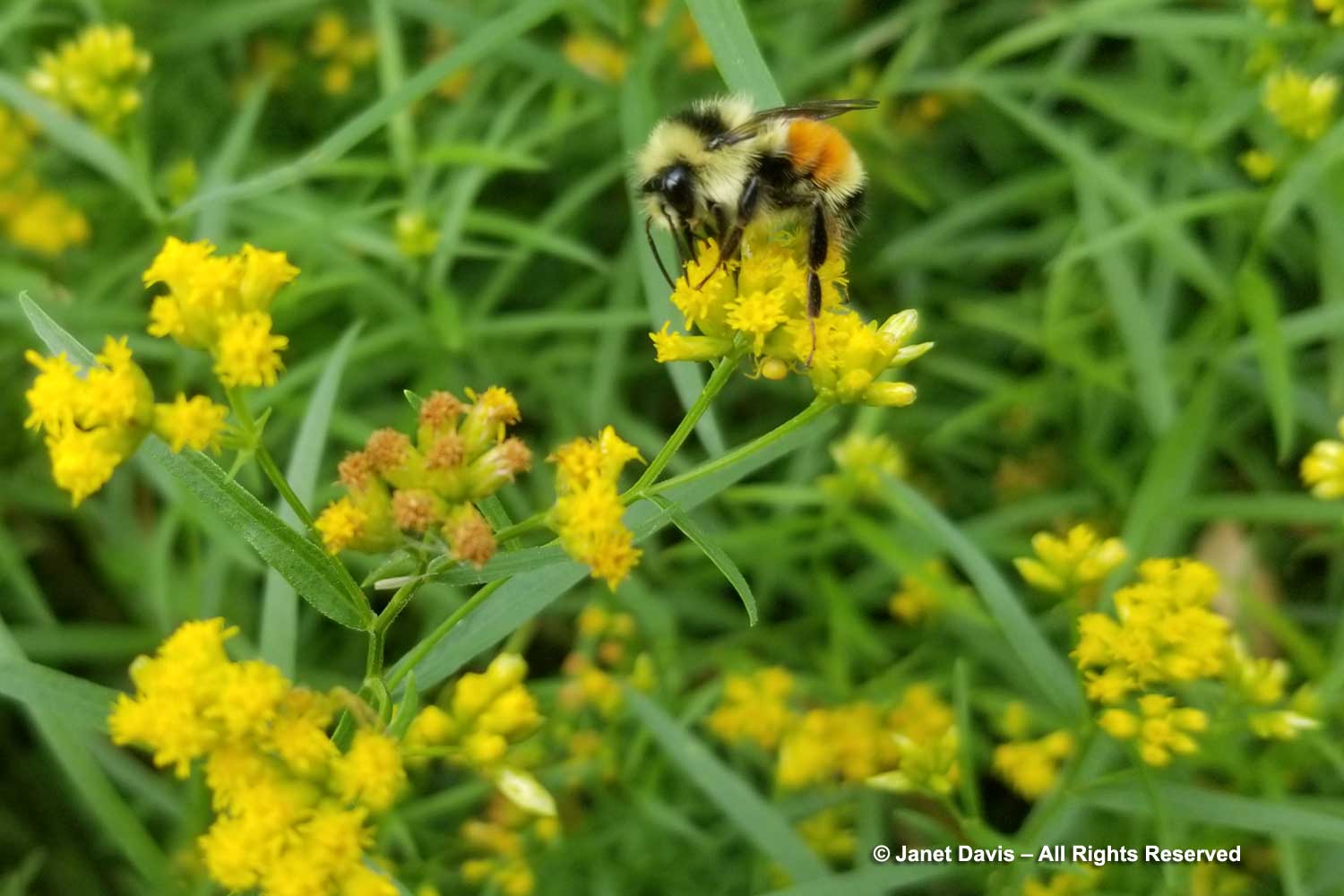
Another abundant goldenrod that occurs naturally on our property is rough goldenrod (Solidago rugosa). Better behaved than its cousin, Canada goldenrod, it is nonetheless proficient at spreading itself around, much to the delight of all kinds of bees. This species gave rise to the popular garden cultivar ‘Fireworks’.
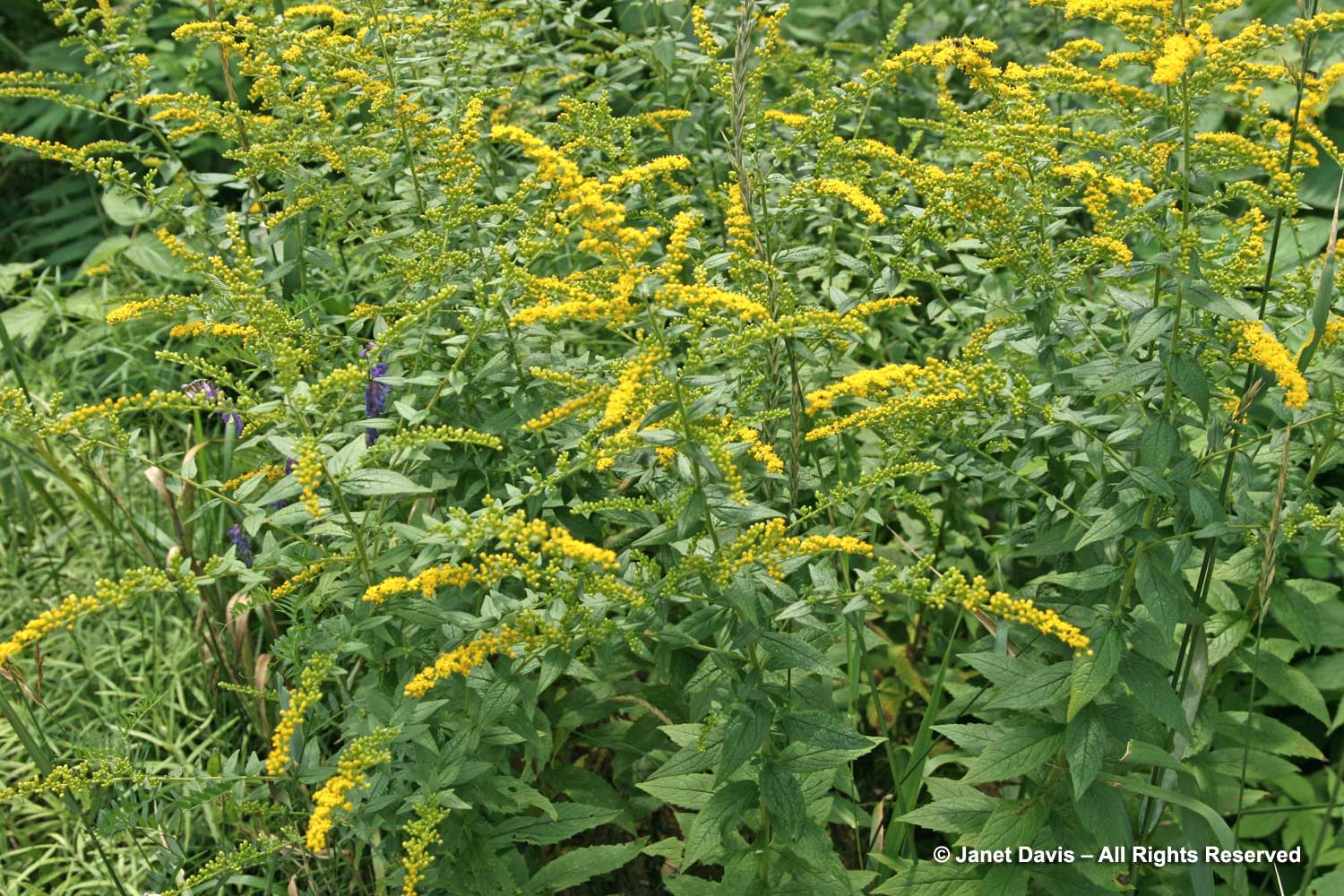
Finally, a few words about one of the tallest plants in my meadows, cup plant (Silphium perfoliatum). I was given my first tuberous roots of this northeast native by the gardeners at Toronto’s Spadina House Museum, with a warning that it would be invasive and I might be sorry I planted it. Fortunately, my meadows are filled with invasives and they all like to duke it out, so for the most part cup plant has been kept in check. Here it is at the base of our stairs.
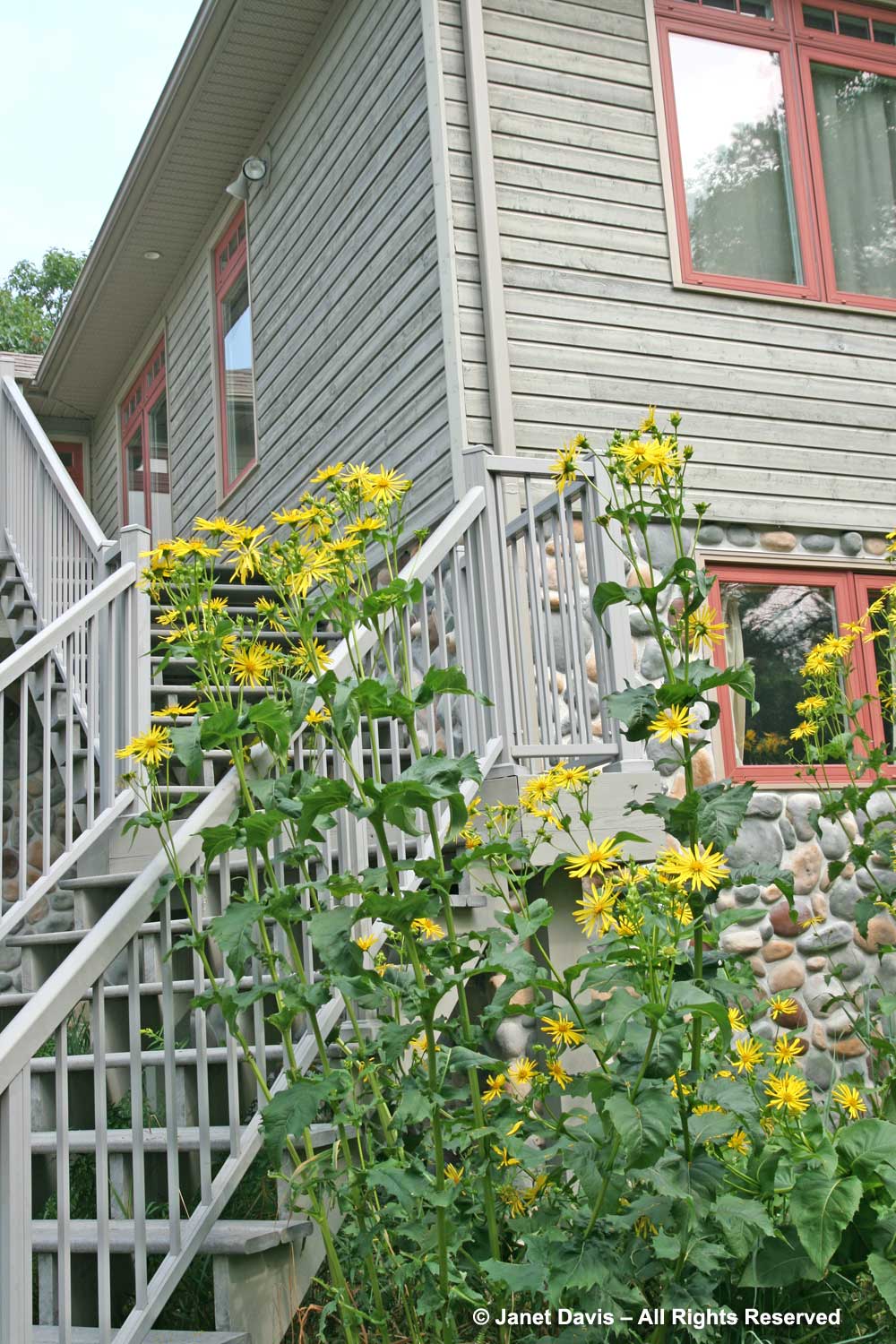
My meadows are dry and sandy which also works against its invasive tendencies. But I saw it on a riverbank at the Chicago Botanic Garden, below, and I can say that it would be much more aggressive in the moist soil that it craves.
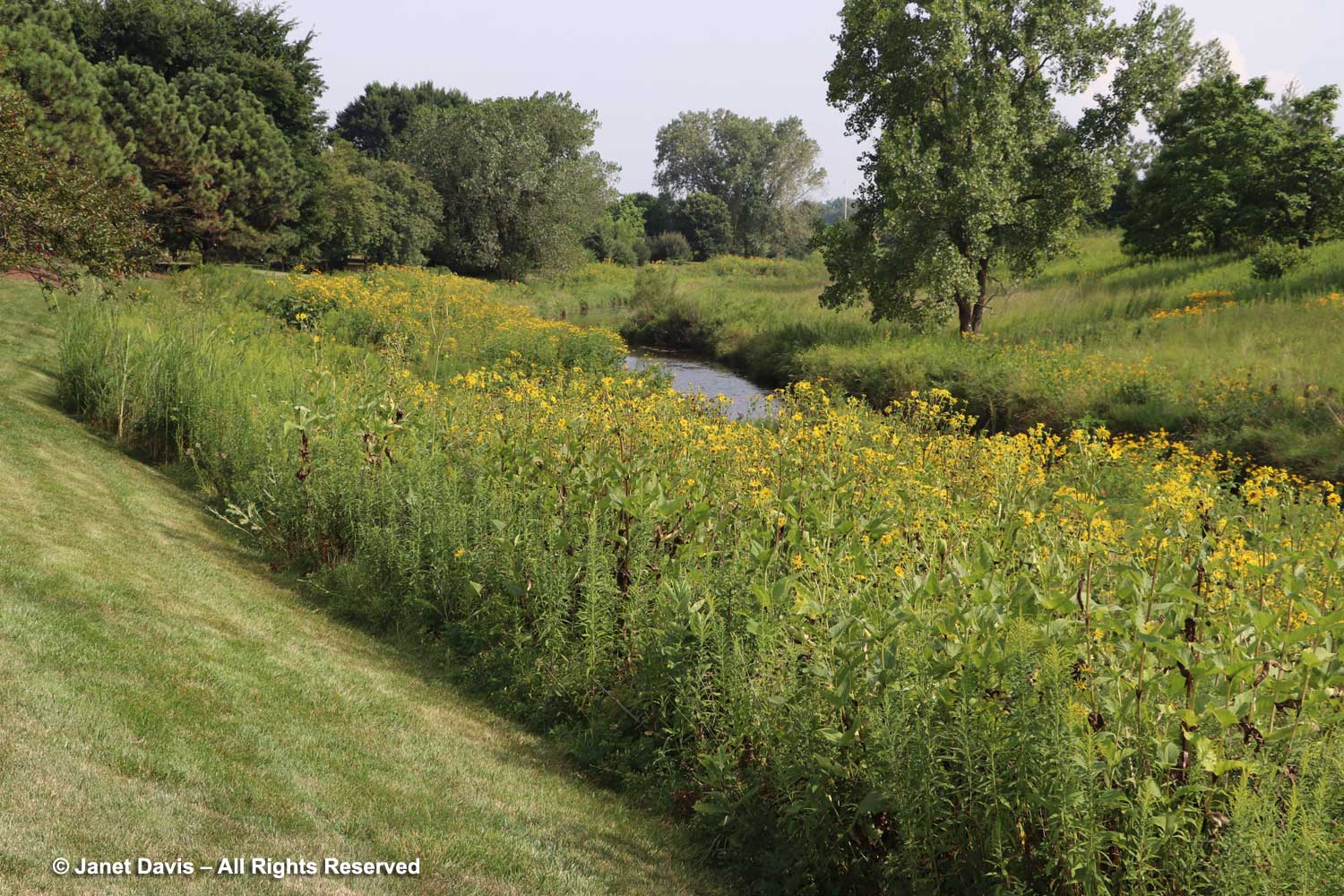
It’s a great favourite of bumble bees…..
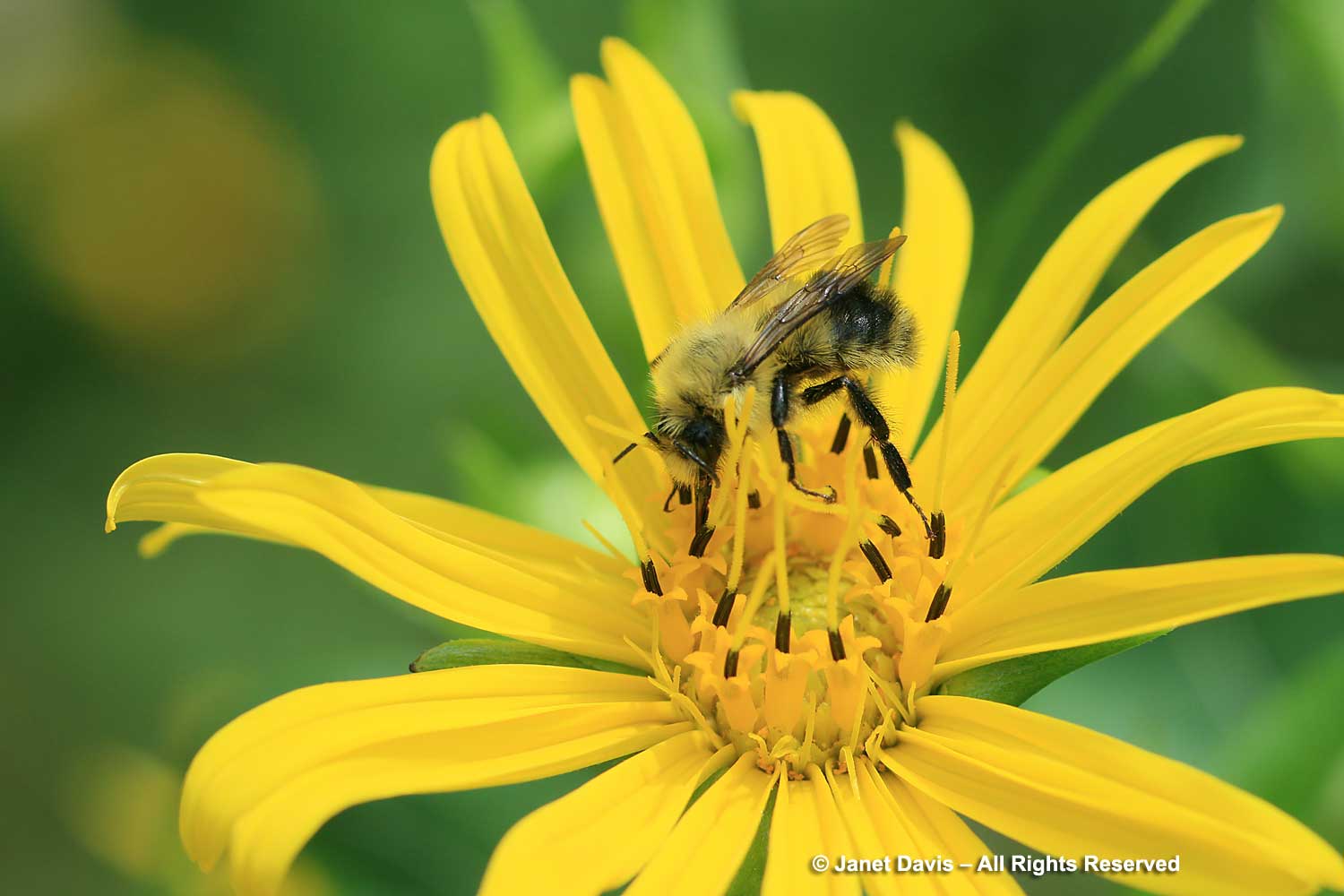
….. and, occasionally, of passing butterflies.
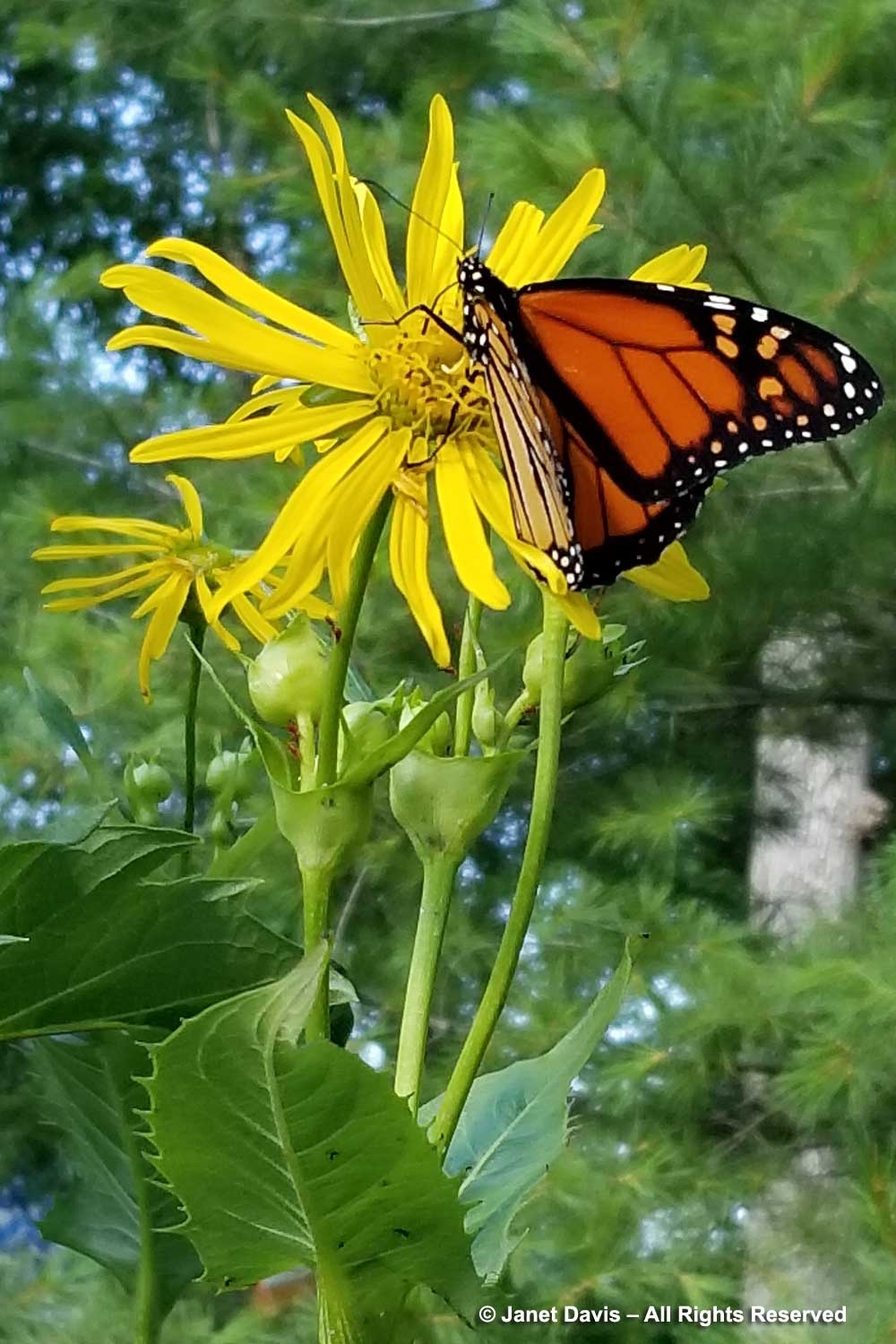
I’ve made up a little video on my cottage cup plants, with a humorously surprising last scene;
Finally, here’s a little August bouquet from my meadows to you… until the next fairy crown.
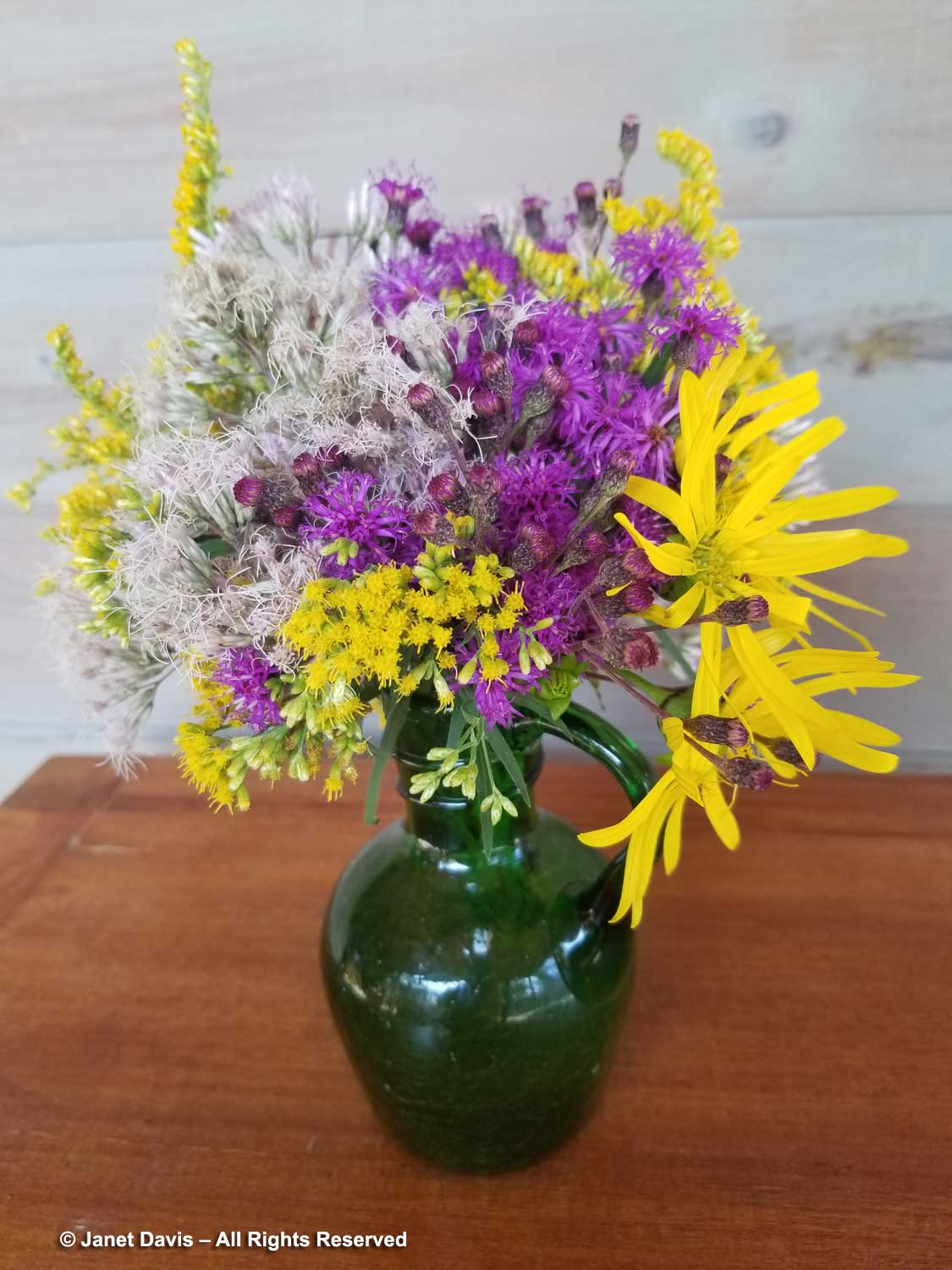

Love the pollinators posing for you with their flowers. Looks like enchantment, but it must be patience and skill. Thanks for the late summer purples and golds.
It does sometimes take a lot of time, but mostly it takes love of doing it. Thank you, Nan.